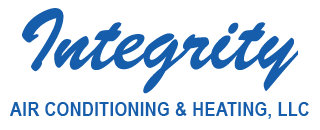Once the weather begins to cool off, you may be wondering about how you’ll make the most of your heating and cooling. After all, HVAC bills can add up to a big portion of your monthly electric bill. To learn new ways to save, some homeowners look closely at their thermostat. Maybe there’s a setting they could use to improve efficiency?
The bulk of thermostats include both a ‘Fan’ or ‘Fan On’ setting. But if the fan is on during a regular cycle, what does the fan setting offer for your HVAC system? This guide will help. We’ll walk through just what the fan setting is and when you can use it to save money over the summer or winter.
My Thermostat Has a Fan Setting?
For the bulk of thermostats, the fan setting indicates that the air handler’s blower fan remains on. A few furnaces will generate heat at a low level with this setting, but for the most part heating or cooling isn’t being made. The ‘Auto’ setting, in contrast, will turn on the fan during a heating or cooling cycle and shut it off once the cycle is complete.
There are advantages and disadvantages to using the fan setting on your thermostat, and whether you do or don’t {will|can|should]] depend on your personal comfort needs.
Advantages to utilizing the Fan/On setting:
- You can keep the temperature in each room more uniform by permitting the fan to keep generating airflow.
- Indoor air quality will be highest as constant airflow will keep passing airborne pollutants through the air filter.
- Fewer start-stop cycles for the HVAC fan helps lengthen its life span. Because the air handler is often a component of the furnace, this means you could prevent the need for furnace repair.
Drawbacks to utilizing the Fan/On setting:
- A nonstop fan could increase your energy expenses somewhat.
- Continuous airflow can clog your air filter up more quickly, increasing the frequency you will want to replace it.
Which Setting for My Thermostat? Fan or Auto in Summer/Winter
During the summer, warm air will sometimes persist in unfinished spaces including the attic or an attached garage. If you leave the fan on, your HVAC system might pull this warm air into the rest of your home, pushing the HVAC system to run longer to keep up with the desired temperature. In serious heat, this can result in needing AC repair more regularly as wear and tear gets worse.
The reverse can take place over the winter. Cooler spaces such as a basement will hold onto cooler air, which may eventually make its way into the rest of your home. Leaving the fan running may pump more cold air upward, increasing the amount of heating you need to remain warm.
If you’re still trying to figure out if you should try the fan/on setting, remember that every home and family’s comfort needs are not the same. Leaving the HVAC system’s fan on may be best for you if:
Someone in your household has allergies. Allergies and other respiratory conditions can be stressful on the family. Leaving the fan on can help to improve indoor air quality, helping your family breathe easier.
Your home has hot and cold spots. Lots of homes deal with persistent hot and cold spots that quickly shift to a temperature different from the rest of the house. The fan setting should help limit these changes by constantly refreshing each room’s airflow.


